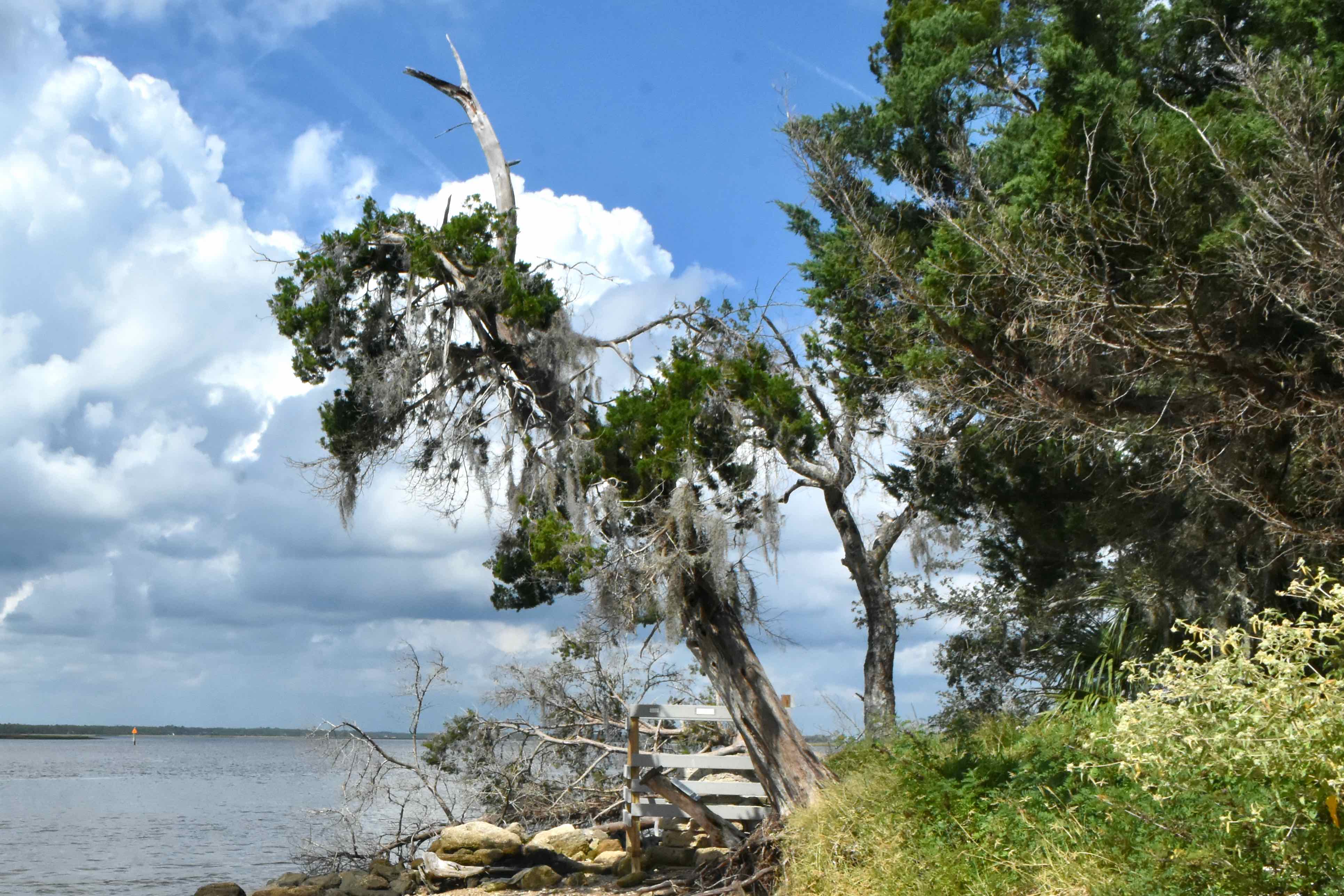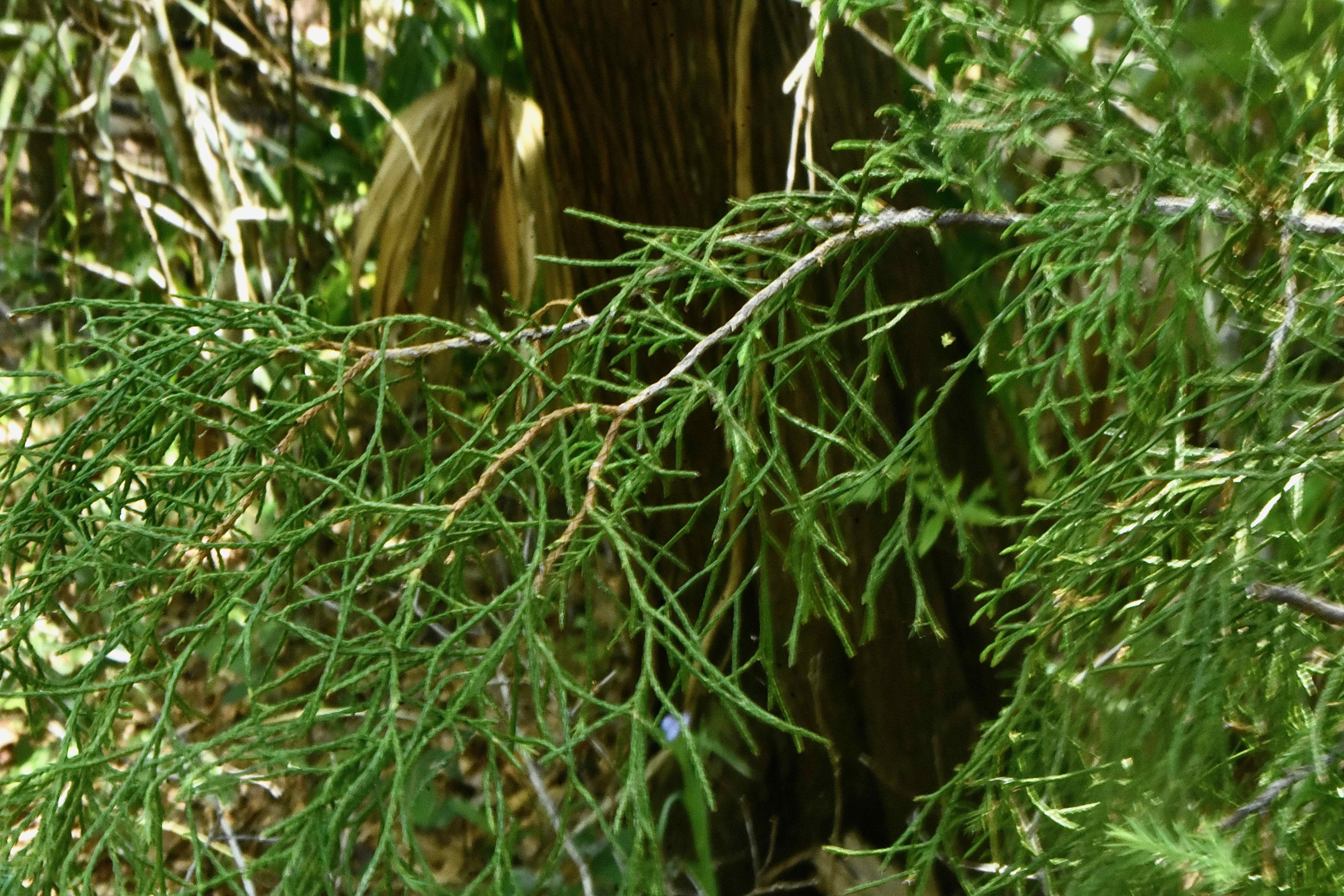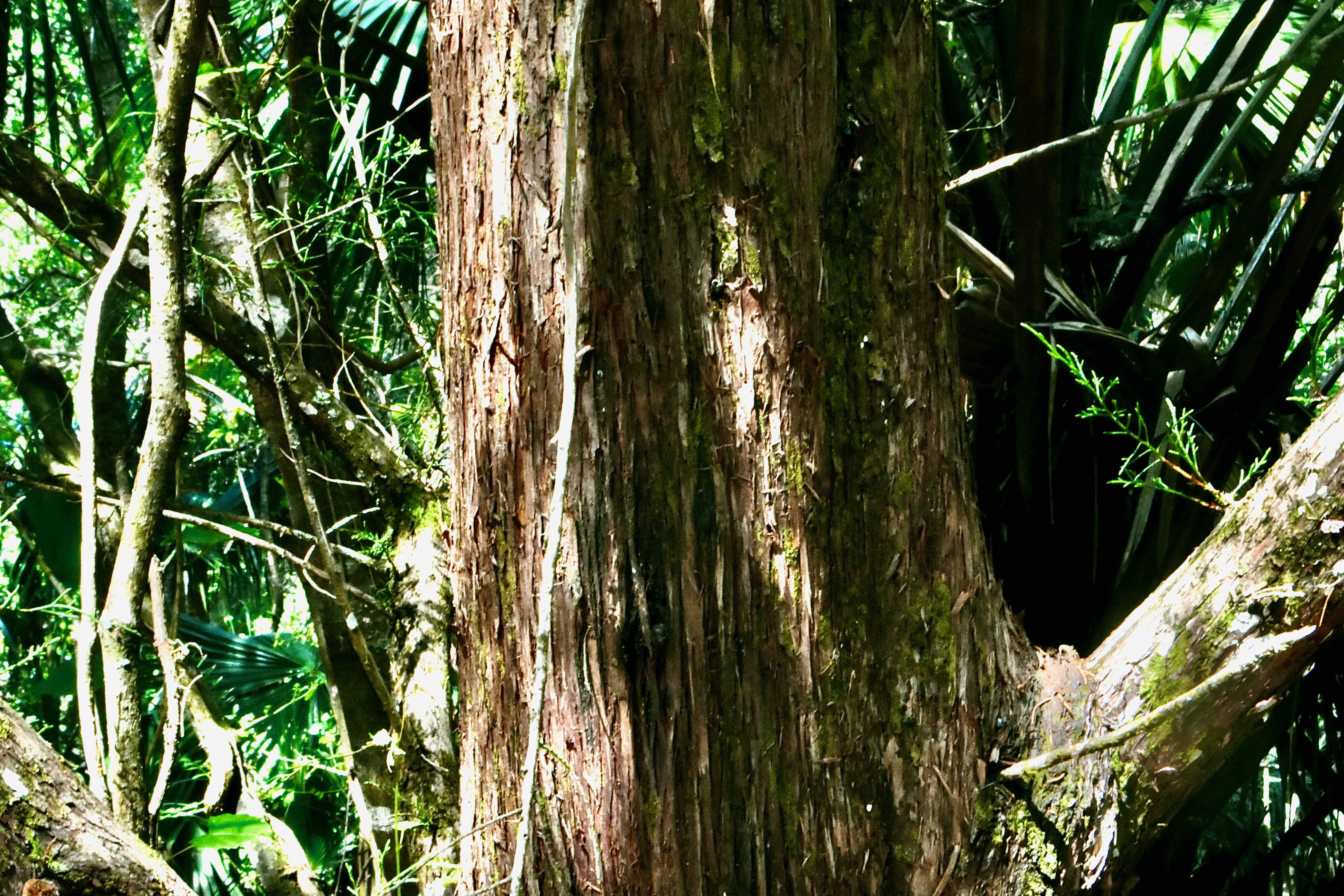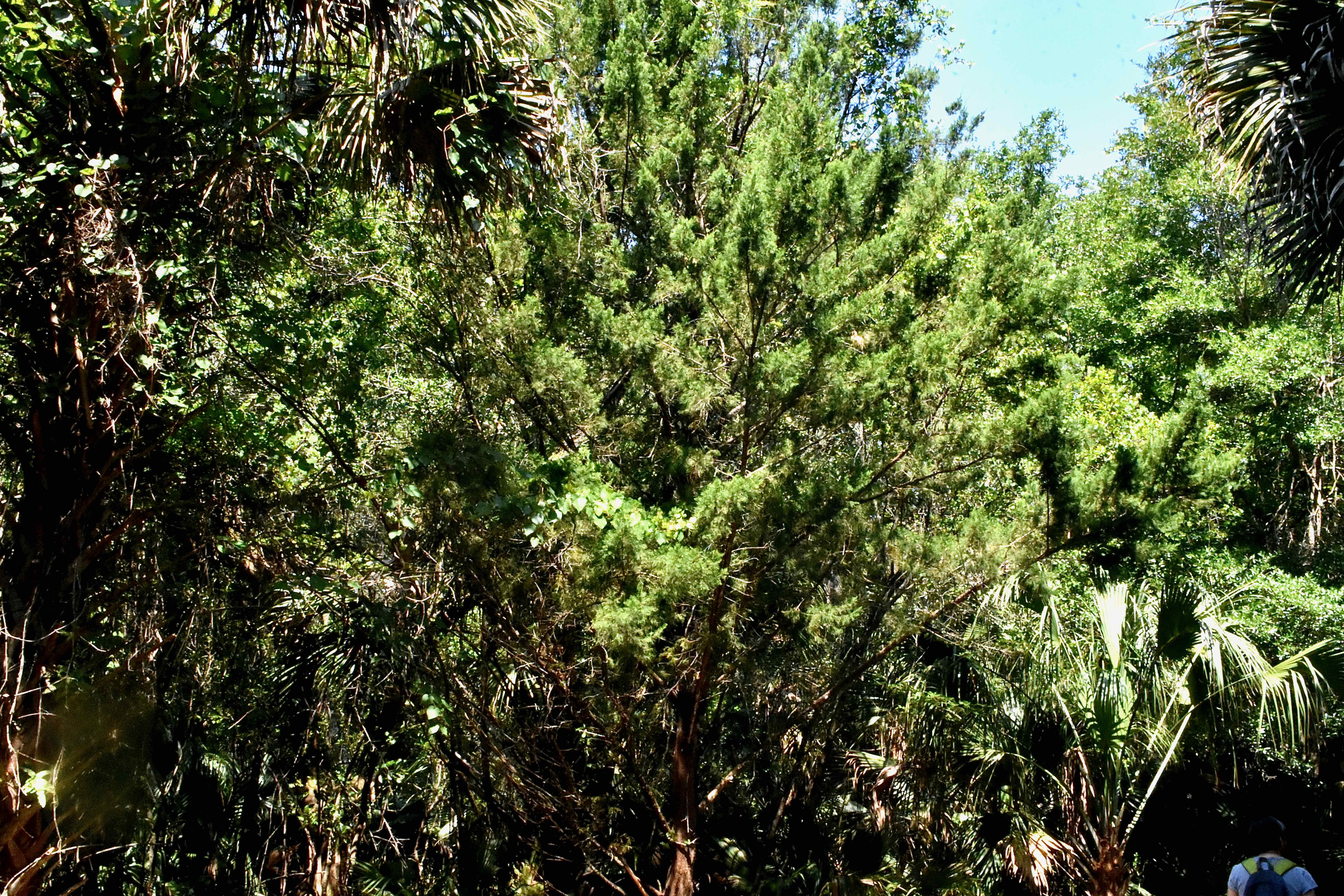
Red cedar, photographed at Guana Tolomito Matanzas National Estuarine Research Center, Ponte Vedra Beach, St. Johns County, in October 2018.
Few trees are as adaptable, as widespread and as useful as red cedar, Juniperus virginiana.
It can be cone-shaped like a Christmas tree — and it’s grown commercially for that purpose — it can be columnar and used as a windbreak or screen. It’s tough enough to thrive in the toughest urban settings or in land reclamation projects where other trees might falter.
Red cedar’s close-grained, durable wood is used to make furniture and paneling, the aromatic oils that it produces have been used as medicine for centuries in both traditional and western medicines. It's distilled oil is still used in manufacturing medicines.
And to top it off, so to speak, it has enough character to be used in making bonsai. Gotta say that’s unique among the plants we’ve profiled over the years.
First thing to note is that despite the name, Red cedar is not a true cedar but rather a juniper. It is a Florida native found throughout much of the Panhandle and Peninsula, though rare in South Florida. The Atlas of Florida Plants (see link below) includes Collier, Lee and Miami-Dade counties as part of its natural range, but the Institute for Regional Conservation (link also provided below) doesn’t list a single park or preserve in any of those counties where Red Cedar grows naturally or is native.
Red cedar is found throughout much of eastern and central United States, from Maine west to the Dakotas and south to Texas. The U.S. Department of Agriculture’s PLANTS Database also includes Oregon as within red cedar’s native range. Red cedar extends across the border into Ontario and Quebec.
The looks of red cedar are unusual enough that it’s difficult to imagine the tree being mistaken for anything else growing in the wilds of Florida. Its closest in-state relatives are cypress trees, but red cedar’s shaggy reddish-brown bark easily separates it from its cousins, as do its cones, which are more berry-like than what we think of as a cone.
Red cedar takes to a variety of shapes from oval to columnar to cone or pyramid. It grows to 40 or 50 feet tall —it can hit 60 — with a spread of 20 to 30 feet across.
The leaves are green, simple, arranged alternately along the stem and needle-like. In northern portions of its range, the leaves can taken on a reddish hue in winter. In Florida, red cedar is evergreen.
Red cedar begins to bloom as early as February; male and female flowers almost always are borne on separate plants (dioecious), occasionally on the same (monoecious). Both male and female flowers are a plain yellow-green in color. It is pollinated by wind.
The flowers give way to a fleshy berry-like cone later in spring. These cones are green at first, turning a light blue as they mature. Each cone contains one to four seeds each. Male trees, by the way, tend to be taller and with a greater diameter than female trees.
Red cedar trees begin to produce seeds at age 10 and can continue to do so after reaching 100. Prime seed-producing years are between 25 and 75. The lifespan of a red cedar tree can exceed 450 years — the oldest ever recorded was 940 years, in West Virginia.
Red cedar’s cones are an important food for both birds and mammals throughout the country. Cedar waxwings in particular love to dine on the cones. Chipping sparrows and mockingbirds use the trees for nesting, while other birds roost within the tree’s dense foliage. In the north, red cedar is particularly important in winter because the cones remain on the tree throughout the season, providing food when other sources are depleted. The dense foliage fends off winter’s rage.
Red cedar takes to a variety of soil types and conditions, thriving in full sun or part shade. It is a tough tree; it’s even moderately salt tolerant. Its one weakness: it does not fair well when coated with ice, which might be a problem in some parts of its range but not so much in the south.
In Florida, favorite habitats include flatwoods, coastal dunes and swales, shell mounds and floodplains.
As we noted above, red cedar has multiple uses in landscaping, as wind screens and buffers but also as a specimen tree in a residential setting. The one thing to keep in mind if you’re planting it in your yard is that it does take up a substantial amount of space.
Its toughness allows it to be used in highway medians, land reclamation projects and in urban settings where air pollution, compacted soil and drainage issues might be too much for less hardy species. It can tolerate drought, but not continuously wet conditions.
Red cedar wood is considered easy to work with, though on the knotty side. It’s been used in construction and in making furniture. During the late 1800s and early 1900s, manufacturers in Cedar Key and other parts of north Florida used red cedar to make pencils. According to the University of Florida, that ended when the local supply of red cedar trees was depleted; a hurricane that destroyed the factories provided the industry’s coup de grace.
Less ecologically damaging, red cedar is a staple of Florida’s small Christmas tree industry. It’s also grown and sold in other states as well, mostly by choose-and-cut farms, according to the National Christmas Tree Association.
Native Americans used red cedar to make lance shafts, bows, and other items. They used it to moth-proof chests. According to the U.S. Department of Agriculture, the Cheyenne highly regarded flutes made from red cedar. “Cedar boughs were used for bedding. The Menomini wove mats of cedar bark. The mats were used for roofing temporary structures, for partitions, floor mats and wrappings, and for various purposes in the canoes.”
Likewise, red cedar, usually made into a tea, played an important role in the traditional medicine of many tribes. It was used to treat worms, rheumatism, colds, asthma and other respiratory conditions, measles, itchy skin, to induce abortions and to speed deliveries and as a diuretic. Various parts of the tree — leaves, cones, roots and young shoots — were used.
Red cedar was a standard part of Western medicine throughout the 19th century. It’s still used by some traditional practioners for various conditions. It’s still included in the U.S. Pharmacoepia, although not as a drug to be ingested.
Some taxonomic notes: There two recognized subspecies of red cedar, both of which are found in Florida. There is southern red cedar, J. virginiana var. silicicola, found throughout most of Florida, and eastern red cedar, J. virginiana var. virginiana, which is limited to Marion County, according to the U.S. Department of Agriculture’s PLANTS Database. Both have extensive ranges outside of Florida.
Some authorities don’t recognize the two subspecies, while others recognize them as separate species.
Other common names for red cedar include easter red cedar (also spelled redcedar), cedar tree, juniper, savin, evergreen, cedar apple, and Virginia red cedar. It is a member of Cupressaceae, the Cypress family.



